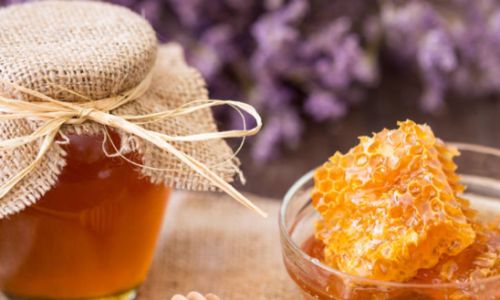Introduction
Australian propolis, a resinous substance harvested by bees from tree buds and sap flows, has gained global recognition for its potent antioxidant, antimicrobial, and anti-inflammatory properties. Revered in natural medicine, skincare, and dietary supplements, propolis is a treasure trove of bioactive compounds like flavonoids, phenolic acids, and terpenes. However, like many natural products, its efficacy hinges on proper storage. Incorrect handling can degrade its quality, reduce its shelf life, and diminish its therapeutic benefits. This article delves into the science-backed methods to preserve Australian propolis, ensuring it retains its potency for years. Whether you’re a beekeeper, a wellness enthusiast, or a retailer, mastering these storage techniques is essential to harness the full potential of this golden elixir.

Understanding Propolis Composition and Degradation Factors
Before exploring storage solutions, it’s crucial to grasp why propolis deteriorates. Propolis is a complex mixture of plant resins, waxes, essential oils, and pollen. Its stability is threatened by environmental factors that accelerate chemical breakdown:
- Temperature: High heat accelerates oxidation, causing flavonoids to degrade and waxes to melt, leading to clumping.
- Light: Ultraviolet (UV) rays disrupt molecular bonds, reducing bioactive compound concentrations.
- Moisture: Excess humidity promotes microbial growth and hydrolysis, spoiling the product.
- Air Exposure: Oxygen triggers oxidative reactions, diminishing potency and altering aroma.
Australian propolis, sourced from eucalyptus, tea tree, and other native flora, may have unique sensitivity to these factors due to its regional botanical origins.
Ideal Storage Conditions for Australian Propolis
Temperature Control: The Cool Advantage
Propolis thrives in cool environments. Ideally, store it between 15°C (59°F) and 25°C (77°F). Avoid fluctuations—repeated warming and cooling cause condensation, which introduces moisture. For long-term preservation, refrigeration (4°C/39°F) is recommended, especially for raw propolis chunks or tinctures. Freezing is generally discouraged, as extreme cold may alter texture, though it won’t harm potency if done correctly.
Pro Tip: If refrigerating, seal the container tightly to prevent moisture absorption from the air.
Light Protection: The Ambient Advantage
UV light is a silent destroyer of propolis. Exposure to sunlight or artificial light sources like fluorescent bulbs can degrade flavonoids within weeks. Opt for opaque, amber-glass containers or store propolis in dark cabinets. Avoid clear jars or plastic packaging, which offer no UV shielding.
Fun Fact: Australian propolis often contains unique compounds like backuchiol (from Plectranthus parviflorus), which are particularly light-sensitive.
Humidity Management: Dryness is Key
Moisture is propolis’s nemesis. Relative humidity above 60% encourages mold and bacterial growth. Use desiccant packets (silica gel) inside storage containers to absorb excess moisture. For raw propolis, ensure hands and tools are dry during handling. If you live in a humid climate, consider a dehumidifier in your storage area.
Caution: Never microwave propolis to “dry” it—this destroys heat-sensitive compounds.
Airtight Sealing: Oxygen’s Nemesis
Oxygen accelerates oxidation, leading to rancidity and loss of aroma. Use airtight containers made of glass or high-density polyethylene (HDPE). Avoid metal containers, which may react with propolis’s acidic components over time. Vacuum-sealed bags are excellent for bulk storage, but ensure they’re heat-sealed properly.

Container Selection: Material Matters
Glass Jars: The Gold Standard
Amber glass jars with airtight lids are ideal. They’re inert, non-reactive, and block UV rays. Opt for wide-mouth jars for easy access to raw propolis chunks. Smaller jars (e.g., 50–250ml) minimize air exposure when opened frequently.
HDPE Plastic: A Budget-Friendly Alternative
Food-grade HDPE containers are safe for short-term storage (up to 6 months). Avoid low-density polyethylene (LDPE), which is permeable to oxygen and moisture.
Avoid Metals and Ceramics
Aluminum or unlined metal containers may leach ions, altering propolis’s composition. Ceramic jars with glaze cracks can trap moisture.
Storage Locations: Where to Keep It
Pantry or Cupboard
A cool, dark pantry is suitable for frequent use. Ensure it’s away from appliances like ovens or refrigerators that emit heat.
Refrigerator
Best for long-term storage (1–2 years). Place the container in the main compartment, not the door, to avoid temperature fluctuations.
Wine Fridge/Cellar
A temperature-controlled wine fridge (12–18°C) offers stability for collectors or retailers.
Avoid These Locations
- Bathrooms (high humidity)
- Near windows or vents (light/heat exposure)
- Garages or sheds (extreme temperature swings)
Handling and Usage Tips to Maintain Quality

- Use Clean Tools: Always scoop propolis with dry, stainless steel spoons or spatulas to prevent contamination.
- Minimize Air Exposure: Decant small portions into separate containers for daily use, keeping the bulk storage sealed.
- Label Clearly: Note the harvest date and batch number to track freshness.
- Grind Propolis Safely: If powdering propolis, use a cold grinding method (e.g., mortar and pestle) to avoid heat-induced degradation.
Shelf Life Expectations
When stored correctly, Australian propolis retains its potency for:
- Raw chunks: 3–5 years
- Tinctures/extracts: 2–3 years
- Powdered propolis: 1–2 years
- Capsules/tablets: Follow manufacturer guidelines (usually 1–2 years)
Signs of Spoilage
- Foul odor (should have a mild, resinous scent)
- Mold growth (white, green, or black patches)
- Liquid separation in tinctures
- Clumping or discoloration
Advanced Preservation Techniques
Vacuum Sealing
For bulk raw propolis, vacuum-sealing in mylar bags with oxygen absorbers extends shelf life beyond 5 years. Store bags in cool, dark conditions.
Freeze-Drying
Commercial producers sometimes freeze-dry propolis extracts to remove moisture without heat, preserving bioactivity. This method is costly but ideal for premium products.
Nitrogen Flushing
Packaging propolis in nitrogen-flushed containers prevents oxidation, common in high-end supplements.
Common Mistakes to Avoid
- Storing propolis in the bathroom (humidity)
- Using plastic wrap (permits oxygen exchange)
- Leaving containers open for extended periods
- Mixing old and new batches (risk of cross-contamination)
Conclusion
Australian propolis is a botanical marvel, but its benefits are only as good as its storage. By controlling temperature, light, moisture, and air exposure, you can preserve its potency for years. Invest in quality containers, choose strategic storage locations, and handle it with care. Whether you’re safeguarding a personal stash or a commercial inventory, these practices ensure that every drop of propolis delivers the healing prowess Australia’s flora is famous for. Remember, proper preservation isn’t just about extending shelf life—it’s about honoring the bees’ hard work and nature’s pharmacy.





0 comments